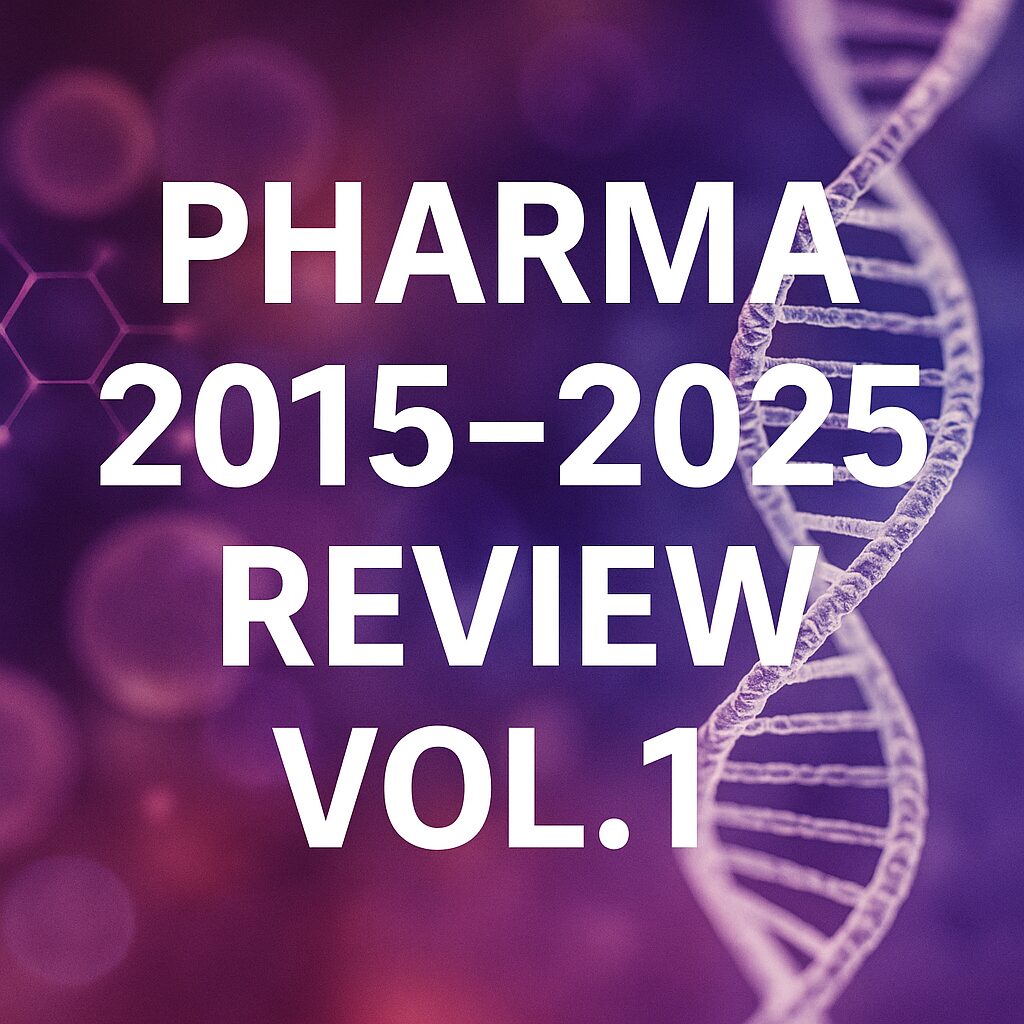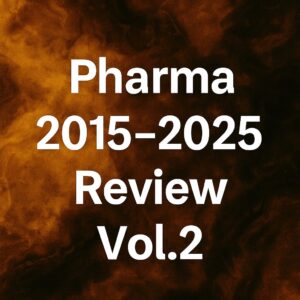Introduction
Between 2015 and 2025, global pharmaceutical giants have expanded into innovative therapeutic areas and pursued internalization or adoption of novel technologies. Based on the strategic movements of 22 companies, this article analyzes key themes, therapeutic areas, and technology trends emerging from major M&A and collaboration activity.
Strengthened Therapeutic Areas and Asset Types
■ Oncology
- Led by Merck, BMS, Gilead, AstraZeneca, and others.
- Focused on ADCs, T-cell engagers, and personalized cancer immunotherapies.
- Notable deals: Merck × Seagen (ADC), BMS × TurningPoint, Gilead × Immunomedics.
■ Immunology and Autoimmune Diseases
- Led by AbbVie (post-Allergan acquisition), Sanofi, and J&J.
- Leveraged new technologies such as FcRn, IL-2 modulation, gut immunity, and gene regulation.
■ Central Nervous System (CNS)
- Otsuka (focused CNS strategy), AbbVie (Cerevel acquisition), and Bayer among the leaders.
- Key efforts include treatments for psychiatric disorders, rare diseases, regenerative medicine, and digital therapeutics.
■ Metabolic Diseases, Diabetes, and Obesity
- Novo Nordisk achieved dominance with GLP-1 and obesity drugs.
- Eli Lilly also entered this space, strengthening its pipeline with AI-driven drug discovery.
mRNA Innovation and the Post-COVID-19 Landscape
The global COVID-19 pandemic brought mRNA vaccines to the forefront between 2020 and 2021.
- Pfizer/BioNTech and Moderna led the way, demonstrating over 90% efficacy — far beyond initial expectations.
- mRNA was validated as a platform capable of producing viable therapeutics, not just theoretical models.
- While J&J and AstraZeneca offered non-mRNA vaccines, mRNA-based products came to dominate the market.
- mRNA has since become central to pharma strategies, with applications expanding to cancer vaccines and beyond.
Companies like Sanofi, GSK, Roche, Bayer, Moderna, and Pfizer have expanded mRNA initiatives in oncology, infectious diseases, and rare diseases, accelerated by advances in RNA modification and delivery platforms and increased collaboration with biotech startups.
Checkpoint Inhibitors: Progress and Limitations
- Merck’s Keytruda and BMS’s Opdivo + Yervoy led the checkpoint inhibitor revolution.
- Subsequent targets included LAG3, TIGIT, TIM3, and BTLA, but none surpassed PD-1/CTLA-4 monotherapy efficacy in trials.
- Developers are now pivoting to combination therapies and refining immune targets and timing for optimal outcomes.
Second-Generation ADCs and Advances in KRAS Inhibitors
- Symbolic deals: Merck’s acquisition of Seagen, Daiichi Sankyo’s Enhertu (with AZ), AbbVie’s acquisition of ImmunoGen (Elahere).
- Second-generation ADCs achieved breakthroughs in efficacy and safety through optimized linkers, payloads, and targeting.
- KRAS inhibitors are progressing beyond sotorasib (Amgen) and adagrasib (Mirati) toward next-generation, resistance-overcoming agents.
Technology Trends: Next-Gen Antibodies, CGT, AI Drug Discovery, RNA Therapeutics
- Next-gen antibodies: ADCs (Merck, AstraZeneca), bispecifics (Amgen, Regeneron)
- CGT: Bayer (BlueRock, AskBio), Novartis (AveXis)
- RNA: siRNA & antisense (Sanofi, Novo), mRNA (Pfizer, Moderna)
- AI drug discovery: Sanofi × Exscientia, Lilly × XtalPi, and others
Partnership Strategy and Cultural Shifts
- Decrease in large-scale M&A; increase in co-development deals with buyout options
- More balanced partnerships with startups, emphasizing joint innovation
- Shift from platform technology acquisition to disease-focused portfolio building
Author’s Perspective
This decade witnessed structural shifts across the pharmaceutical industry, driven by advances in oncology, the rise of mRNA, and the resurgence of ADCs. mRNA is expanding from infectious diseases to oncology, while CAR-T and ADCs are showing potential in autoimmune indications. The limited solo efficacy of new checkpoint inhibitors illustrates the need for flexible strategies and smart exit planning. Going forward, cross-modality design tailored to specific diseases will be a key differentiator.




Comments